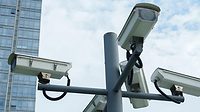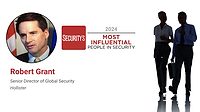Education & Training
Preventing security training burnout among employees
While working to build a proactive active shooter prevention strategy, security leaders should remember to consider employees' mental health to prevent burnout.

WoodysPhotos / iStock / Getty Images Plus via Getty Images
With 646 mass shootings happening in 2022, and more than 400 so far in 2023, security leaders are highly aware of the need for active shooter prevention strategies. Organizations have implemented various strategies including enhanced weapons detection, additional law enforcement onsite or safety drills.
Here, security leaders in healthcare and education share some of their strategies for protecting themselves and their organizations from these kinds of attacks.
“Organizational buy-in is imperative from the start. You must get stakeholders to commit to active shooter response plans at the beginning by having them provide the necessary resources and support,” says Mike Hasselbrink, Director of Physical Security at University of Alabama at Birmingham. “The right amount of effort on the front end will go a long way in providing the momentum needed to propel an active shooter program toward success. Success is everyone feeling and being safe and secure.”
Jeff Hauk, Director of Public Safety and Police Authority Services at Memorial Healthcare, also highlights leadership and management as key to active shooter prevention. In the healthcare sector, he says collaboration across many departments helps ensure emergency preparedness across the board.
“Gather a diverse group of individuals who have relevant expertise, including representatives from security, management, human resources, risk management, communications, facilities, clinical staff and any other relevant departments or roles,” Hauk says.
Even the most advanced technology won’t solve an issue of poor communication between teams and departments. An alarm system in a school, for example, only works if teachers and staff have a quick and easy way to implement it. Any emergency codes need to be well communicated and understood, as time is critical during an emergency.
All of this preparation, however, can take a toll on the community.
“Training should be conducted by qualified instructors experienced in law enforcement operations. Part of the qualification to be an instructor is knowing the signs of fatigue and techniques to combat it. Continuous and mundane training will only burn everyone out and not give your team time to absorb the benefits of the training program,” Hasselbrink says.

This doesn’t only apply to employees. For example, in the education sector, students bogged down with constant drills may stop taking them seriously, and it could lead to added stress from constantly thinking of how to protect themselves if a shooter enters the building.
The content of these trainings is equally as, if not more, important as the frequency at which they occur. Security leaders should consider all layers of security in the event of an emergency. Employees, patients/students and guests all need to be considered when building lockdown and evacuation plans. Building a plan for an elementary school will be largely different from a college, just as a hospital in the middle of a city will have a different plan than one in a remote area.
Hauk outlines best practices for considering all elements in an active shooter plan. “Create evacuation plans that address the movement of patients, staff and visitors, including those with mobility challenges,” Hauk says. “Establish lockdown/lockout procedures and consider facility layout and design to ensure easy evacuation routes and safe zones. Develop procedures for securing sensitive patient information during an incident and consider the presence of hazardous materials or equipment that may require specialized handling. Provide training on recognizing warning signs and reporting concerns about suspicious activity. Collaborate closely with law enforcement and first responders to keep them abreast on your response plans. Coordinate with local law enforcement for rapid response and evacuation support.”
Detailed planning is essential, especially in fast-moving environments such as hospitals. “Healthcare is an industry strafed with high stress, emotions, high energy and the risk of life and death situations, requiring strong leaders to help mitigate this turmoil and chaotic environment,” Hauk says.
The added stress of the environment makes it especially important for security leaders to develop clear strategies. Staff should be trained not only for emergencies, but also in de-escalation to help prevent emergencies. This can mean reporting suspicious behavior or having security staff nearby when leadership is delivering difficult news to reduce workplace violence risk.
Just like planning for fatigue, security leaders should also consider the functionality of their buildings and security systems.
“Designing a facility that is difficult for an active shooter to access can be a challenge. You must balance operations with security. This means having security measures in place, such as locked doors, security cameras and alarm systems that don’t prevent the organization from being able to function,” Hasselbrink says.
Individually screening everyone who tries to enter a facility may be effective at detecting weapons, but it dramatically slows down operations. Students would have to arrive to school early, and hospitals would lose valuable seconds when responding to injuries. Adding weapons detection technology to passively monitor people in the area can be a compromise, as it provides safety features without affecting functionality. Education security leaders have implemented clear bag policies to review students’ belongings without always having to stop them individually.
There are several aspects to consider when building out an active shooter response plan. The best plans consider not only major risks, but staffing and technology constraints. Strategy can’t override overworked staff, making employee mental health essential to effective security plans. Security leaders need ensure everyone within their organization is prepared, as stress and exhaustion can make all the difference in an emergency.
Looking for a reprint of this article?
From high-res PDFs to custom plaques, order your copy today!






